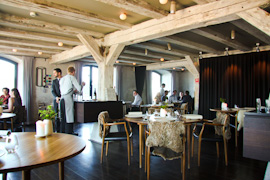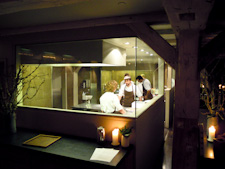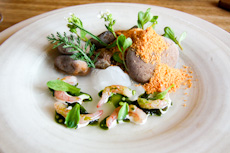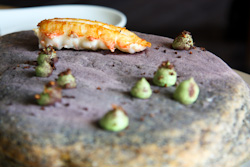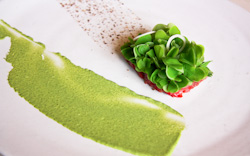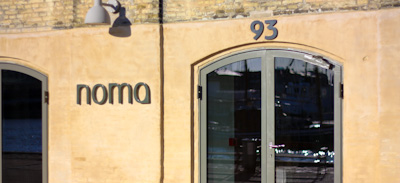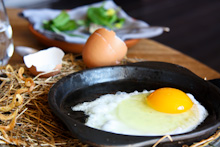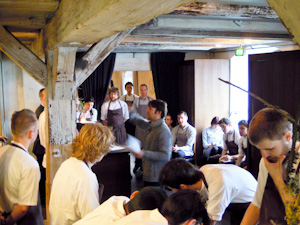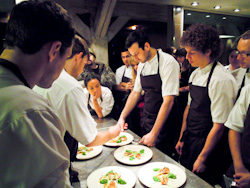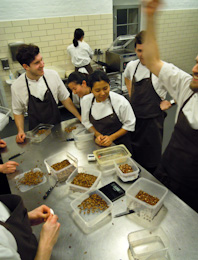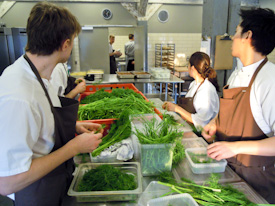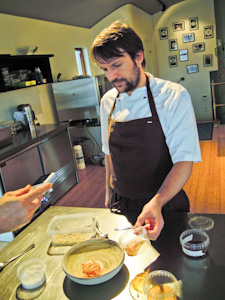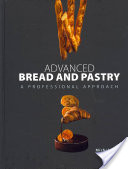Chef’s guide to Rome
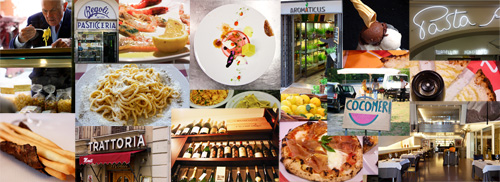
Updated April 28, 2013
Apart from the obvious recommendation which is Ristorante Metamorfosi, the place where I am working, I propose a number of places in or near the center of Rome.
Most names on my list are places where I tend to go back time after time since I have found them to keep offering a constant high quality. The rest, a few places in here, I have found very interesting at first visit, and they have a good probability of becoming my future favorite hangouts.
EATING
Er Buchetto
This tiny hole-in-the-wall is more of a snack bar than a real restaurant, but this does not mean you will leave hungry. The name “Er Buchetto” actually means “small hole” – very suiting considering its size. This is one of those typical places that chefs love – excellent food in the simplest of ways. The place has a long history and is one of those unbeatable spots to find a bit of the atmosphere of ancient times. The porchetta is the way to go. Either as stuffing in a piece of white bread or on its own. Have a plate or two of marinated vegetables and cheese on the side and wash the whole thing down with a carafe of house red. If you’re lucky (or willing to wait) you might find a seat inside, otherwise a porchetta sandwich to-go is the perfect snack while touring the city.
Via del viminale 2F (Termini)
Franchi
Just next to the Castroni shop on Via Cola di Rienzo. This is a historic bottega in 2 sections, filled to the brim with Italian specialities. One section of the bottega offers buy-and-take-home products like cured meats, cheeses, pasta, conserves, truffles and spirits, the other part offers cooked food, both hot and cold, meant to be eaten at one of the standup tables or even taken home. Some examples – cooked meat and fish, salads, pasta, lasagna, vegetables and one of the best Roman fast foods – supplì - deep-fried risotto balls!
Via Cola di Rienzo 204 (Prati neighborhood)
Gaudeo
Head to this Panini shop in the Monti neighborhood if you’re looking for a quick meal of good bread filled with Italian quality ingredients. Don’t expect to sit down since the place is tiny, and bringing your panino to the nearby piazza where seating is plentiful is a great idea anyway! You will find an ample choice of different panini and obviously beer and wine to go with that. Service is excellent and they will happily guide through their selection of panini, even in English.
Via del Boschetto 112 (Monti neighborhood)
Pastificio on Via della Croce
Pastificio is a generic name for the shop of a pasta maker. This particular pastificio makes pasta of course, but as a bonus it also serves bargain plates of pasta for lunch on weekdays. These guys offer at least two varieties of pasta a day – all of them classic recipes from Rome and beyond. Lunch starts at 1 pm. Sharp. So sharp you can set you clock by it. Probably the only thing in Rome that begins on announced time. For 4 € you get a fresh pasta dish served on a plastic plate and then you help yourself to a glass of wine at the counter and some water from the bottles at the tables. A couple of minutes before 1 pm a line will start to form and business begins, so be there on time. Some examples of what might be served here are tonnarelli cacio e pepe, meat-filled ravioli, gnocchetti with tomato and tuna sauce, taglioini with butter, ham and green peas or amatriciana.
Via della Croce 8 (Centro storico)
Roscioli - Salumeria e Ristorante
Roscioli is a upscale delicatessen-cum-restaurant where you can have a outstanding lunch or dinner. Start off with some cold cuts, burrata with sun dried tomatoes and a dish of pasta. The Roman classics Carbonara, Cacio e pepe and Amatriciana are prime choices. They also have loads of foodie bling-bling to take home – oils, pastas, jams, salts, wines and so much more.
Via dei Giubbonari 21 (Centro Storico)
Tel: +39 06 6875287
Antico Forno Roscioli
This is one of the best bakeries in town, serving sandwiches made-to-order and sublime thin-crust pizza as well as selling delicious bread, pastries and scrumptious biscotti. Try the pizza bianca with a slice of mortadella, the pizza rossa and a handful of “brutti ma buoni” cookies for those with a sweet tooth.
Via dei Chiavari 34 (Centro Storico)
Pizzarium
A definite foodie destination – even featured in Anthony Bourdains No Reservations.
Gabriele Bonci makes pizza al taglio (by the slice) extraordinaire. Slowly risen dough, first-class flour and highest quality topping ingredients makes for a special treat. (And a higher-than-normal price)
Apart from pizzas with both classic toppings and loony new combinations, Bonci has some of Rome’s best deep-fried rice balls.
Via della Meloria 43 (Vatican)
Metamorfosi
Situated in the Parioli district, just north of the city center. This modern restaurant holds one Michelin star and serves contemporary cuisine with Italian flavors interpreted by young chefs. This is the place to go when you want to splurge on a memorable meal with first-class service, or just to enjoy a contrast to pizzas and pasta-laden trattorias.
Via Giovanni Antonelli 30/32 (Parioli neighborhood)
Tel: +39 06 8076839
Antico Arco
On top of the Gianicolo Hill (which is just west of the Trastevere neighborhood) you will find this restaurant that successfully blends traditional flavors and modern preparations in a contemporary setting. Service is friendly and what comes out of the kitchen is proof of the chef’s solid skills. Try the varm mozzarella in crispy phyllo dough or the anchovy, burrata and zucchini flower gratin. Don’t miss the carbonara with truffles or the excellent amatriciana.
Piazzale Aurelio 7 (Janiculum Hill)
Tel: +39 06 5815274
La Gatta Mangiona
In Monteverde, south-west of the center and just next to the Pamphilj park you find this restaurant and pizzeria. The atmosphere here is noisy and effervescent - just the way it’s supposed to be in Rome!
This place offers an extensive menu, so finding something for everyone’s taste shouldn’t be a problem. The menu includes some of the best fritti in town - crispy supplì with new and old flavor pairings, deep-fried zucchini flowers, baccalà and potato crocchette – then a long list of pizzas from their wood-burning oven, and on to tweaked pastas and secondi from the traditional cuisine. They offer a nice selection of wines and artisan beers. And don’t forget to scrutinize the chalkboard thoroughly – the seasonal specials here are well worth a try.
Via Federico Ozanam 30 (Monteverde neigborhood)
Tel: +39 06 5346702
Nanà Vini e Cucina
In an extremely central location like this (just next to Fontana di Trevi) finding a decent place to eat can often be a nightmare. Romans themselves steer clear of these areas when it comes to dining since it’s hard to find a restaurant that actually serves you anything that could be categorized as flavorful and genuine. Nanà is an exception to that rule. The restaurant offers Neapolitan cuisine with simple but very tasty seafood dishes, pastas and pizza. Good coffee and traditional Neapolitan desserts.
Via della Panetteria 37 (Centro storico)
Tel: +39 06 69190750
Da Danilo
A very good trattoria choice on the Esquiline Hill, not far from the main station Termini. The obvious picks here are the traditional pastas, especially Carbonara and Cacio e pepe. The mixed antipasti is a great way to start your meal.
Via Petrarca 13 (Termini)
Tel: +39 06 77200111
Trattoria Monti
Another good restaurant on the Esquiline Hill, just a few minutes walk from the Termini station. The cuisine has its roots in the Italian region “Le Marche” which is situated on Italy’s east coast, between mountain and sea. Although one might find inspiration from other regions on the menu, many of the dishes are classics from the Cucina Marchigiana.
Via di San Vito 13 (Termini)
Tel: +39 06 4466573
Tempio di Iside
Never mind the service which at times can be more than a bit confusing. Come here for the food. Excellent raw and cooked seafood starters, as well as risotto “frutti di mare” and pastas. For main course fresh fish and seafood can be chosen from a display and cooked to order. It can seem a bit pricey, but it’s still great value for money when we’re talking really fresh seafood.
Via Pietro Verri 11 (On the corner of Via Labicana)
Tel: +39 06 700 4741
Sforno
I would no doubt dub this one of Rome’s best pizzerias. The pizzas here are much closer to the Neapolitan thick-crust style than the Roman thin-crust style. The soft dough is carefully crafted from quality flour and is left to ferment and rise slowly with great results. You can find both traditional toppings and more creative combinations.
Its location is a bit out of the way, but with the Metro A line it’s still pretty easy to reach.
Via Statilio Ottato 110/116
Tel: +39 06 7154 6118
Tonda
Pizzeria Tonda is actually a cousin of Pizzeria Sforno, and you notice it by looking at the menu which offers basically the same selection of well-executed pizzas and excellent deep-fried appetizers. The spot is a bit out of the way in an residential area and you might want to catch a cab to get there. Tonda has one ace up its sleeve though, it’s open on Sundays!
Via Valle Corteno 31 (Montesacro neighborhood)
Tel: +39 06 8180960
Pizzeria Florida
Very good “pizza al taglio” (by the slice) in a great downtown location, where trying a few different pizza slices won’t cost you an arm and a leg. Great place for a quick lunch or an afternoon snack while sightseeing in the neighborhood.
Via Florida 25 (Just across from Largo Argentina)
L’Arcangelo
Excellent fritti, supplì and pastas. Chef Arcangelo Dandini serves very finely executed versions of classic Roman dishes. This is upscale “Cucina Romana” at its best.
Via Giuseppe Gioacchino Belli 59 (Prati neighborhood)
Tel: +39 06 3210992
SWEETS
Mondo di Laura
When I don’t bake my own cookies, this is my supplier. Laura Raccah bakes cookies and baked goods with inspiration from Tel Aviv, London and New York. All products are kosher, made from organic ingredients and are sold in very cute, gift-friendly packaging. The best and most convenient place to buy them is Lauras little shop in the Ghetto. Don’t forget to try the cookie named “Pepita” – dark chocolate chip cookies with pink Himalayan salt. Divine!
Via del Portico d’Ottavia 6 (Ghetto)
S.A.I.D
Does anyone of you like chocolate? This is a real chocolate factory from 1923, renovated in later years and now complete with chocolate shop, café, bar and restaurant – decorated with old chocolate moulds and factory equipment. The buffet lunch is good value for money and the setting is nice. A bonus is that you from here have a great possibility to explore the San Lorenzo neighborhood where most tourists never go.
Via Tiburtina 135 (San Lorenzo neighborhood)
Regoli
Old-school pastry shop where both décor, recipes and flavors are well conserved from an epoch long before I was born. The shop dates back to 1916 but the pastries are fresh! You won’t find fancy looking cakes or patisserie a la francaise, but you will find classic Roman sweets and a variety of simple but tasty calorie bombs.
Via dello Statuto 60 (Termini)
SHOPPING
Mercato Esquilino
This is a cool place to visit even if you’re not planning on doing any actual grocery shopping. Definitely the most multi-cultural market in Rome is situated just a stone’s throw away from Termini train station. Here you will find - in addition to the common fish, meat, vegetables and fruits – heaps of exotic ingredients from Asia, Africa, South America and beyond.
Via Principe Amadeo & Via Ricasoli (Termini)
Mercato di Campagna Amica del Circo Massimo
This Farmer’s market is held every weekend in the Circus Maximus neighborhood, bringing regional produce (fruit, vegetables, meat, cheese, wine, olive oil etc) from all over the Lazio area closer to the city people. Here you will find good local products offered at honest prices straight from its producers. And it’s a lot of fun to walk around here too, especially when you observe how much the offered produce changes from season to season. Open on Saturdays and Sundays.
Via di San Teodoro 74 (Circus Maximus)
Aromaticus
On a cobble-stone street in the Monti neighborhood (and just next to Tricolore bakery) you find this charming little boutique in the herb-dealing business. This is a real promised land for a chef, with a huge amount of fresh herbs in pots, shoots, leaves, salads, spices, seeds, plant growing utensils and more. Simply put, a great place to go when you need to add some herby fragrance to your cooking (or your balcony). At Aromaticus, owners Luca and Francesca also serves light lunches from 1pm. Herb-filled salads, fish carpaccio, and hand chopped steak tartare are some examples from the menu. For sure, a shop of this type is bound to become all the rage among us city dwellers. Even the old Roman retirees living across the street has learned to pronounce “urban farming” in near perfect English.
Via Urbana 134 (Monti neighborhood)
Er Cimotto
This is the greengrocer I go to when I need to find something out of the ordinary. It can be an exotic fruit, a hard-to-find vegetable or a particular berry. They always carry a good selection of fresh herbs as well as bread, pasta and other staples.
Piazza della Malva 6 (Trastevere neighborhood)
La Tradizione
One of my favorite shops in Rome. Few places has such an outstanding selection of quality cured meats and salami. A fair selection of interesting cheeses makes it even harder not to buy more than you planned.
While you’re in the neighborhood don’t forget to stop by Pizzarium for a pizza slice, it’s just a few steps away.
Via Cipro 8 (Vatican)
Beppe e i suoi formaggi
This cheese (and wine) shop in the Ghetto carries an impressive selection of cheeses from both Italy and France. There’s also salumi , rustic bread and a selection of gourmet products. You can buy to take home or sit down and eat in the small wine bar section.
Via Santa Maria del Pianto 9a/11 (Ghetto)
Castroni
This gourmet food shop has multiple locations throughout the city. Here you will find tons of food and ingredients from all over the world – a wonderland for expats and exchange students looking for a taste of home – or for a chef looking for unusual ingredients. They are also well-known for their own coffee blends and in some of their locations they serve very good coffee, in others I prefer to just stay away from the coffee.
The biggest and best Castroni shop is on Via Cola di Rienzo 196. (Prati neighborhood)
Peroni
When you are looking for kitchen equipment and tools, this should be one of your first stops. A well-stocked shop with a good mix of home kitchen tools and professional gear. Peroni sells a multitude of products ranging from knives, pots&pans, home appliances, utensils and drinking accessories to a big selection of pastry molds and necessities. Maybe you are looking for some Italian specials like an automated ravioli maker, a parmesan grater or the useful tagliapuntarelle?
Piazza dell’Unità 29 (Prati neighborhood)
DRINKING
La Barrique
Wine bar in the Monti area with a nice atmosphere, a good selection of Italian and French wines and a small but well-composed menu of tasty dishes, ranging from cheese and cold cuts to scrumptious pastas and classic main courses.
Via del Boschetto 41 (Monti neighborhood)
Open Baladin
This is the place to enjoy a great selection of Italian craft beer both on tap and bottled. They also serve quite a range of beer-friendly fare - burgers, flavored potato chips, fried scrocchette and pastas. The atmosphere is very informal and the comfy sofas can easily make you stay longer than planned.
Via Degli Specchi 6 (Centro Storico)
Machesietevenutiafa
Small and unpretentious little beer pub where all the passion and energy goes into selecting and serving many great beers from around the world. Staff is exceptionally good at guiding drinkers in choosing the right beer according to their taste.
Via Benedetta 25 (Trastevere neighborhood)
4:20
An amazing beer pub with a wide selection of international beers and whiskys. Decent pub grub too! Slightly off the beaten track for tourists but well worth the effort to seek out. Open late, until 4 in the morning Thursday to Saturday (to 2 am the other days). Can’t get any better!
Via Portuense 82 (Between Trastevere and Testaccio neighborhoods)
Il Goccetto
A nice long list of wines by the glass makes this a great place. Pair this with friendly service and some traditional Italian snacks and we have a winner.
Via dei Banchi Vecchi 14 (Centro Storico)
Vinoroma
If you want to learn more about Italian wines, here’s an excellent start. I went to a very interesting tasting a couple of years ago with Vinoroma founder Hande Leimer and have been a proud supporter ever since. Vinoroma does guided tastings, seminars, wine & cheese lunches and more. Tastings are held in a downtown wine studio with a thousand year old wine cellar.
Vino al Vino
This is a small neighborhood wine bar, often packed with wine lovers and quite noisy but it’s the perfect place to hang out with locals. They serve simple cold and hot fare, cheese and cold cuts, pies and their legendary caponata. The wine list is interesting and the prices are very reasonable.
Via dei Serpenti 19 (Monti neighborhood)
Caffè Paranà
This café serves a good espresso, and the fact that it is just in front of the Termini station makes it the best shot in this area.
Piazza dei Cinquecento 39 (Termini)
Tazza d’Oro
Just steps away from Pantheon, this is one of my favorite coffee roasters in Rome and a good place to start exploring Rome from a coffee drinker’s perspective. Apart from the normal espresso, one of their big sellers is the Granita di caffè con panna, coffee granita with whipped cream – a good way to cool down in summer.
Via degli Orfani 84 (Centro storico)
Ai Tre Scalini
This charming little place in the Monti neighborhood can be found in the ivy-covered building on Via Panisperna (between Serpenti and Boschetto). It’s the perfect place for an after-dinner drink on a warm summer’s night. Usually packed with people both indoors and outdoors, occupying (more correctly “blocking”) the narrow street outside.
Via Panisperna 251 (Monti neighborhood)
Domus Birrae
Beer! My shop and tasting area of choice - drink-in or take out. Vast assortment of artisan beers, especially from Italy and Northern Europe. They also sell all the supplies needed by a home brewer.
Via Cavour 8 (Monti neighborhood)
Salotto 42
This is the wine bar of choice for a chunk of Rome’s chic crowd when having an aperitivo or an evening drink. The bar itself is very stylish and quite welcoming, but my favorite custom (especially on a warm summer’s evening) is to take my drink outside into the small Piazza di Pietra and marvel over the 11 gigantic columns of Tempio di Adriano just in front of the bar.
Piazza di Pietra 42 (Centro Storico)
GELATO
Fatamorgana
No doubt some of the best gelato in Rome is to be found in this hole in the wall shop conveniently located in the Monti neighborhood. An array of flavors ranging from traditional zabaione, stracciatella or pistacchio to more modern creations like pear and gorgonzola, tobacco-flavoured chocolate or Amarena cherry and beer. Although having been open for less than a year, its new location on a quiet backstreet piazza, has quickly made it a favorite spot. Ice cream lovers from all over Rome as well as tourists queue up here on sunny days. Piazza degli Zingari 5 (Monti neighborhood)
Gelateria dei Gracchi
On fair walking distance from the Vatican, this is the perfect spot for an ice cream after a visit to the Pope’s crib. Great gelato made from fresh ingredients and seasonal fruits makes this a favorite spot with both locals and visitors.
Hazelnut, pistacchio and chocolate & rum are three praised classics to try.
Via dei Gracchi, 272 (Prati neighborhood)
Neve di Latte
Excellent gelateria close to the Maxxi museum in the Flaminio neighborhood, just north of the city center. Slightly off the beaten track maybe, but well worth the hike, especially in combination with a visit to the museum. They don’t have a very big selection of flavors, but the ones they do have are spot on! Both their pistacchio and hazelnut ice creams are illegally good.
Via Luigi Poletti 6 (Flaminio neighborhood)
SPECIAL MENTIONS
Katie Parla
Whenever I have doubts about any food or eating-related issue in Rome, I usually turn to Katie Parla, an authority on the subject of eating out in Rome. She’s got both a nice blog (Parla Food) with lots of information about Rome, as well as a superb app called Katie Parla’s Rome with tons of suggestions on food, drinks and shopping.
You can even book a private food tour of Rome with this lady!
Now have a great time in Rome!
